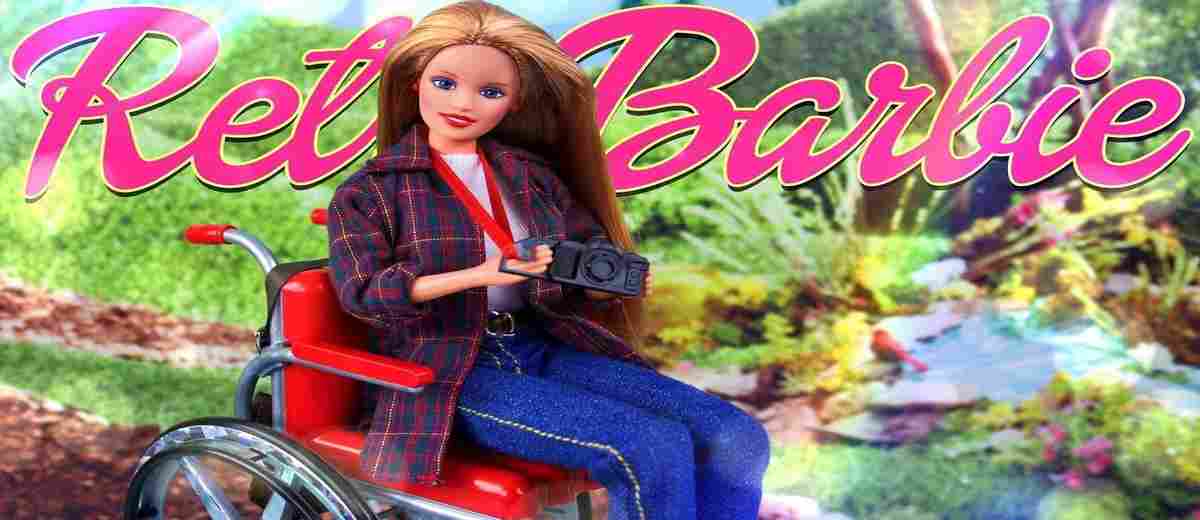Becky, the Wheelchair Using Doll, was Discontinued. Here’s why
From the article
quote:Last year, Mattel announced that it was giving Barbie a makeover — introducing new body shapes, skin tones and even flat feet to make the iconic doll look more realistic. “Barbie reflects the world girls see around them,” Mattel president and COO Richard Dickson said.
Mattel made a similar statement in 1997 when it introduced “Share‐a‐Smile Becky,” a Barbie friend who used a wheelchair — but that time, the toymaker’s efforts didn’t go quite as planned.
With her shiny pink wheelchair and tiny backpack, Becky was an instant hit. As many as 6,000 dolls were sold in the first two weeks, and disability advocates praised Mattel for bringing visibility and representation to wheelchair users.
But the warm, fuzzy feeling didn’t last. Kids and collectors soon discovered that Becky’s wheelchair didn’t fit through the doors of the Barbie Dreamhouse — that pink‐swathed epicenter of Barbie’s social world. The chair couldn’t squeeze inside the house’s elevator, either.
At the time, Mattel responded to the controversy by saying that the company was “looking at the accessibility of all Barbie accessories.” But as producer Renee Gross reports, that’s not the end of Becky’s lesson about disability and inclusivity.
Recently, Gross brought a “Share-a-Smile Becky” doll and a brand-new Barbie Dreamhouse to Monique Kulick, an accessibility advocate based in Ann Arbor, Michigan. As it turns out, Becky’s wheelchair still doesn’t fit in the Dream House elevator, 20 years later.
end quote
Don’t worry, Mattel came up with an awesome solution to the “Becky Problem”:
quote:…Becky disappeared from shelves altogether — but not before Mattel reportedly considered making her wheelchair smaller, so she could fit through the doors of Barbie’s house.
“A lot of the talk about why Becky doesn’t exist anymore in any iteration is that it was too complicated to redesign Barbie world to fit Becky,” says Karin Hitselberger, who has blogged about the Becky dolls she had as a child. “So, they just got rid of her.”
end quote
They just got rid of her. How awesome is that? In a world where disabled children are desperate for representation in media, Mattel decided that it was too hard to make Becky’s wheelchair fit in the kitchens, living rooms, and elevators of Barbie’s idilic world so they just got rid of her.
To show you just how damaging this kind of mindset is, let me introduce you to a doll company that actually cares about disabled children:
I’m sure a lot of you are already familiar with this video, but I want to point out two important moments of dialogue in it:
In tears, the little girl announces:
quote:It’s got a leg like me!
end quote
quote:Thank you for making a doll like me!
end quote
First off, I’m not crying, you’re crying. And second, this could have been a Mattel doll. Mattel could have had 20 solid years of making memories like this, but they chose not to because it was just too hard.
Frankly, I think leaving Becky and the Barbie Dream House as‐is would have been a better decision. The goal of the modern Barbie was to show girls what they could expect to encounter and accomplish in life: astronaut, teacher, doctor, photographer. By leaving Becky unable to so much as enter the Barbie Dream House, they would have given an entire generation of disabled girls a realistic expectation of the ableist bullshit they’d have to overcome in their adult lives.
